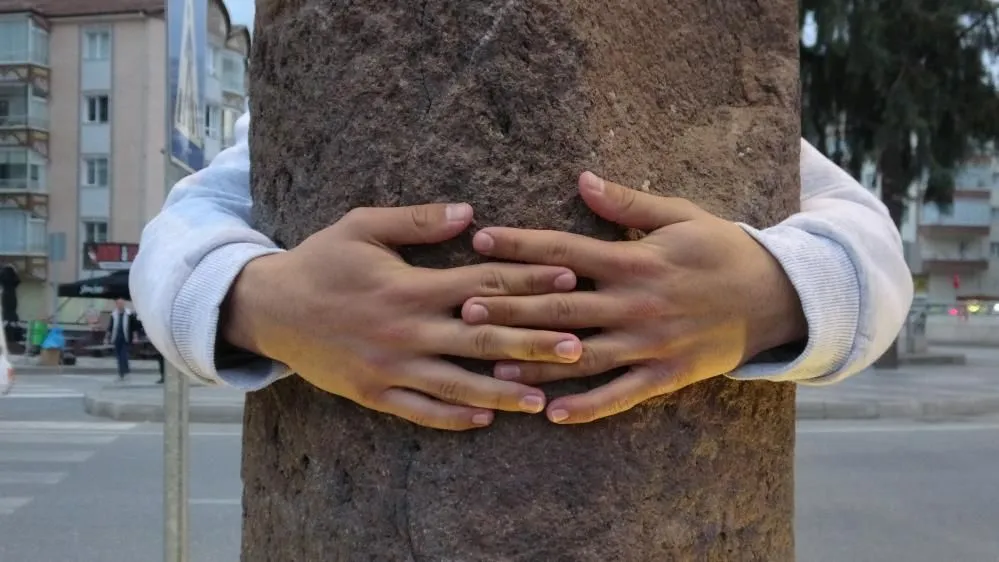
The Roman Embrace Stone, believed to grant wishes and bring healing
Embrace Stone, the symbolized structure of the small and charming city of Çankırı in Central Anatolia, has been a mysterious site that has captivated the curiosity of both locals and visitors for centuries. The heart-shaped hollow on its surface and the legends surrounding it have contributed to the stone’s mystical aura. However, it is quite difficult to obtain clear information about the history and purpose of this stone.
Thought to Date Back to the Roman Period
There is no definitive scientific data regarding the exact date of construction and purpose of Embrace Stone. However, it is believed to date back to the Roman period. It is known that stones were used for various purposes during this time. Embrace Stone is thought to have been used for the following purposes:

- Religious Rituals: The Roman period was dominated by polytheistic paganism. Stones were considered sacred and used in religious rituals during this time. It is believed that Embrace Stone may have been used similarly in a temple or sacred area for rituals.
- Solar Calendar: The hollow on the stone may function as a simple calendar used to track the movement of the sun. This would allow for the monitoring of seasonal changes and agricultural activities.
- Boundary Marker: Some scientists suggest that the stone may have been used as a boundary stone or a guidepost.
- Gravestone: The hollow on the stone may carry a symbolic meaning, possibly marking a grave.
Embracing the Stone is Believed to Grant Wishes
The most well-known feature of Embrace Stone is the heart-shaped hollow on its surface. This hollow is considered a point where wishes are believed to be granted. This belief has led to many stories and legends surrounding the stone. According to some, the stone possesses energy that brings good to people. There is also a belief among the public that embracing the stone will lead to the acceptance of wishes.

Some believe that the stone has healing powers. Those suffering from physical and spiritual ailments seek healing from the stone. It is believed that the stone wards off negative energies and provides protection.
Embrace Stone is an important structure both historically and culturally. The legends surrounding the stone reflect the meanings that people attribute to natural events and objects. However, more scientific research is needed to reach definitive information about the true purpose and history of this stone.
You may also like
- A 1700-year-old statue of Pan unearthed during the excavations at Polyeuktos in İstanbul
- The granary was found in the ancient city of Sebaste, founded by the first Roman emperor Augustus
- Donalar Kale Kapı Rock Tomb or Donalar Rock Tomb
- Theater emerges as works continue in ancient city of Perinthos
- Urartian King Argishti’s bronze shield revealed the name of an unknown country
- The religious center of Lycia, the ancient city of Letoon
- Who were the Luwians?
- A new study brings a fresh perspective on the Anatolian origin of the Indo-European languages
- Perhaps the oldest thermal treatment center in the world, which has been in continuous use for 2000 years -Basilica Therma Roman Bath or King’s Daughter-
- The largest synagogue of the ancient world, located in the ancient city of Sardis, is being restored











Leave a Reply